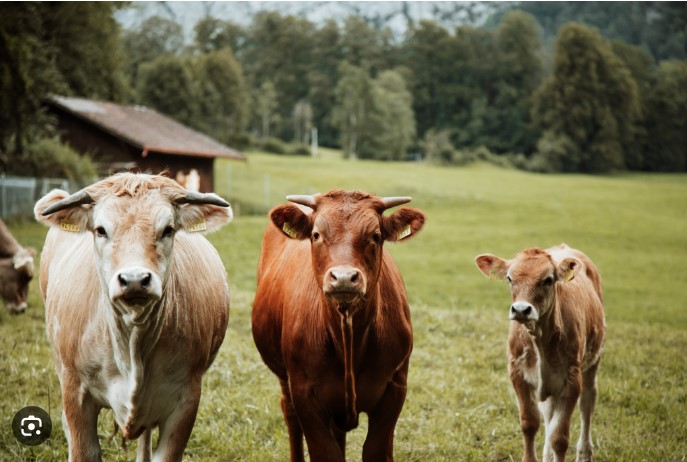Methane is a powerful greenhouse gas that contributes to global warming and climate change. One of the major sources of methane emissions is the livestock sector, especially cattle. Cows produce methane when they digest their food, and they release it through burping and farting. According to some estimates, a single cow can emit up to 500 liters of methane per day.
To reduce the environmental impact of cattle farming, scientists are working on various solutions to make cows belch less methane. One of these solutions is selective breeding, which involves choosing and mating cows that naturally produce less methane. By analyzing the genetic and microbial factors that influence methane production, researchers hope to identify and breed low-methane cows that are more efficient and climate-friendly. Now there is great progress being made in the project.
When Canadian dairy farmer Ben Loewith’s calves are born next spring, they will be among the first in the world to be bred with this specific environmental goal: burping less methane.
Loewith, a third-generation farmer in Lynden, Ontario, in June started artificially inseminating 107 cows and heifers with the first-to-market bull semen with a low-methane genetic trait.
“Selectively breeding for lower emissions, as long as we’re not sacrificing other traits, seems like an easy win,” Loewith said.
The arrival of commercially available genetics to produce dairy cattle that emit less methane could help reduce one of the biggest sources of the potent greenhouse gas, scientists and cattle industry experts say.
Semex, the genetics company that sold Loewith the semen, said adoption of the low-methane trait could reduce methane emissions from Canada’s dairy herd by 1.5% annually, and up to 20%-30% by 2050.
The company this spring began marketing semen with the methane trait in 80 countries. Early sales include a farm in Britain and dairies in the US and Slovakia, said vice-president Drew Sloan.
If adopted widely, low-methane breeding could have a “profound impact” on cattle emissions globally, said Frank Mitloehner, professor of animal science at University of California Davis, who was not involved in developing the trait.
Some dairy industry officials remain unconvinced about low-methane breeding, saying it could lead to digestion problems.
Canada’s agriculture department said in an email that it has not yet assessed the methane evaluation system underlying the product but that reducing emissions from livestock was “extremely important.”
The low-methane breeding material is the product of a partnership between Semex and Canada’s milk-recording agency Lactanet and based on research by Canadian scientists.
Lactanet in April released the world’s first national genomic methane evaluation, and has produced results from Holstein cows and heifers on 6,000 farms, representing nearly 60% of Canada’s dairy farms.
Semex is not initially charging extra for the methane trait, said Michael Lohuis, Semex’s vice-president of research and innovation. He declined to provide sales projections but expects sales to remain slow until financial incentives emerge.
The Canadian government currently offers no incentives for low-methane cattle breeding, but the agriculture department said in an email that Ottawa is working to introduce offset credits for reducing methane through better manure management.
Some countries and food companies have begun to encourage farmers to move to lower-emitting cattle. The technology is seen as the future of animal food production.
Mitloehner said he expects companies to eventually recognize low-methane breeding, too. “Genetic change is permanent and cumulative across future generations so it can add up to substantive reductions,” Lohuis said. “This is certainly not the only tool dairy producers can use to reduce methane on-farm, but it may be the simplest and lowest-cost approach.”












